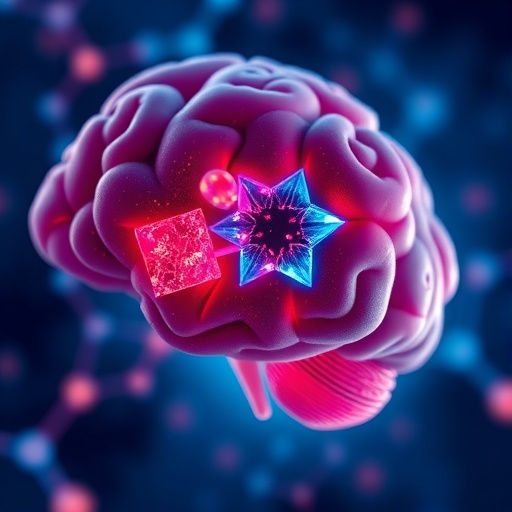FOR IMMEDIATE RELEASE, September 10, 2025
Contact: Gina DiGravio, 617-358-7838, ginad@bu.edu
A Groundbreaking Discovery: Eye and Blood Protein SLIT2 Shows Strong Links to Cognitive Performance
New research reveals SLIT2 protein levels as promising early indicators of cognitive decline
Scientists at Boston University have unveiled new findings that may revolutionize the early detection of cognitive impairment and dementia through an unexpected biological pathway: the eye. Their study, published recently in the Journal of Alzheimer’s Disease, demonstrates a significant association between SLIT2 protein concentrations in both the eye’s vitreous humor and bloodstream plasma with individuals’ cognitive test scores, pointing to SLIT2’s potential as a tangible biomarker for neurodegenerative disease’s earliest stages.
Neurodegenerative disorders, such as Alzheimer’s disease and various forms of dementia, often manifest with insidious accumulation of pathogenic proteins within neural tissues, impairing brain function progressively. Understanding and detecting molecular changes that precede overt symptoms is crucial to halting or mitigating these diseases before irreversible damage occurs. SLIT2, traditionally recognized for its role in axon guidance and neural development, has recently come under investigation for its possible contribution and detectability related to cognitive health.
Prior studies hinted at elevated SLIT2 protein levels being correlated with late-onset dementia and Alzheimer’s disease cases, but these results lacked confirmation via the latest commercial immunoassays and failed to include early-onset dementia populations. This void motivated the Boston University team to develop a customized, highly sensitive SLIT2 electrochemiluminescence immunoassay, leveraging Meso Scale Discovery (MSD) technology, to precisely quantify SLIT2 concentrations in biological specimens.
Their cohort comprised seventy-nine middle-aged patients undergoing ocular surgery, averaging 56 years old. This allowed parallel collection of vitreous humor—the clear gel filling the eyeball—and plasma samples, enabling a unique comparative analysis. Subjects also participated in comprehensive neurocognitive assessments, including the Montreal Cognitive Assessment (MoCA) and verbal memory tests, providing a multifaceted picture of their cognitive status in conjunction with SLIT2 quantifications.
Remarkably, their analyses revealed a dualistic relationship: lower levels of SLIT2 within the vitreous humor correlated with poorer cognitive scores, specifically on general cognitive function and immediate verbal recall tests. Conversely, higher plasma SLIT2 concentrations were paradoxically linked to diminished cognitive performance, suggesting complex systemic and localized protein dynamics in neurodegenerative pathology. Of further intrigue is the discovery that the eye’s vitreous humor contains up to seven times the concentration of SLIT2 than circulating plasma, yet levels in these two compartments are not intercorrelated, hinting at independent regulatory mechanisms or compartmentalized protein processing.
Dr. Manju L. Subramanian, co-corresponding author and associate professor of ophthalmology, underscored the significance of these findings: “This is the first time we have established SLIT2 protein in ocular fluids as a biomarker candidate connected to cognitive function. Considering the eye’s retina expresses SLIT2 robustly, ocular sampling could become a minimally invasive, innovative window into early neurodegenerative changes.” Such advancement holds promise because early detection methods for mild cognitive impairment and incipient dementia remain limited and often invasive or costly.
Additionally, the research team meticulously controlled for numerous confounding factors—age, sex, race, diabetic status, diabetic retinopathy, glaucoma, and Apolipoprotein E (APOE) genotype—ensuring the robustness of the SLIT2-cognition link. The persistence of the association despite these variables highlights the protein’s independent prognostic potential, enhancing its value in clinical and research settings.
The biological implications of divergent SLIT2 trends in vitreous humor versus plasma remain an active field of inquiry. SLIT2’s role in axon guidance suggests it may reflect neuroregenerative or neurodegenerative processes at play within the central nervous system and ocular environment. Elevated plasma levels in subjects with cognitive decline could represent compensatory mechanisms or pathological leakage from affected tissues, whereas reduced vitreous concentrations might indicate localized ocular and retinal degeneration paralleling brain changes.
Importantly, this study pioneers not only the measurement of SLIT2 across two distinct biological fluids but also introduces the eye as a previously underutilized source for biomarkers of brain health. The vitreous humor’s accessibility during routine clinical procedures, along with novel assay methods, positions it as an attractive candidate for widespread diagnostic translation.
Published online ahead of print on September 3, 2025, and presented at the prestigious 2025 ARVO Annual Meeting in Salt Lake City, Utah, these findings stimulate new enthusiasm within neuro-ophthalmology and dementia research communities. They offer fresh avenues for interdisciplinary collaboration aiming to combat the global challenge of neurodegenerative dementias, whose incidence is increasing amid aging populations worldwide.
This landmark work was supported by multiple funding bodies, including the National Institutes of Health, Department of Defense, Boston University Ignition and Evans Center Awards, and undergraduate research programs, highlighting broad institutional commitment to advancing neurodegenerative diagnostics.
As the scientific community moves towards precision medicine and early disease interception, SLIT2’s identification as a candidate biomarker opens promising frontiers. Further longitudinal studies, expanded cohorts, and mechanistic explorations will be essential to validate these results and elucidate SLIT2’s functional contributions to cognitive decline and retinal neurobiology. Yet, the prospect of harnessing simple ocular fluid analysis to detect early dementia stages faster and less invasively than ever before inspires hope for millions impacted by cognitive disorders.
Subject of Research: Cells
Article Title: The association between SLIT2 in human vitreous humor and plasma and neurocognitive test scores
News Publication Date: September 10, 2025
Web References: 10.1177/13872877251374287
Keywords: Diseases and disorders, Neurodegenerative disease, SLIT2 protein, Cognitive impairment, Biomarkers, Vitreous humor, Plasma, Alzheimer’s disease, Mild cognitive impairment, Neurocognition, Electrochemiluminescence immunoassay, Ophthalmology




